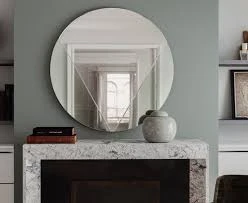

Understanding Low Iron Float Glass Characteristics and Applications
Low iron float glass, often referred to simply as low iron glass, has become increasingly popular in various industries due to its superior clarity and high light transmission properties. Unlike conventional float glass, low iron float glass contains a reduced amount of iron oxide, which significantly alters its optical characteristics. This article delves into the unique properties, manufacturing process, applications, and advantages of low iron float glass.
Properties of Low Iron Float Glass
The most distinctive feature of low iron float glass is its exceptional clarity. The reduced iron content allows for more light to pass through, resulting in a highly transparent product. While standard float glass exhibits a greenish tint due to the presence of iron, low iron glass is nearly colorless, providing a crystal-clear view without the distortion caused by impure materials. This property makes it an ideal choice for various applications where visibility is paramount.
In addition to its clarity, low iron float glass boasts high strength and durability. It is manufactured using the same technology that produces regular float glass, making it a robust material capable of withstanding environmental stressors. Furthermore, its resistance to UV radiation makes it an excellent option for applications where sunlight exposure is a concern.
Manufacturing Process
The production of low iron float glass involves a specialized process that prioritizes purity and transparency. The primary ingredients, silica sand, soda ash, and limestone, are combined with a reduced quantity of iron oxide. This careful formulation is followed by a melting process in a furnace at high temperatures, typically around 1600 degrees Celsius. Once melted, the glass is floated on a bed of molten tin, resulting in a smooth, flat surface.
The glass is then slowly cooled in a controlled environment to relieve internal stresses. After cooling, it undergoes rigorous quality control checks to ensure that its optical and mechanical properties meet industry standards. This meticulous production technique is essential for creating a product that is reliable and suitable for high-end applications.
Applications of Low Iron Float Glass

Due to its advanced properties, low iron float glass is utilized in various sectors. One of the most significant applications is in architecture and construction. Building facades, skylights, and glass curtain walls often incorporate low iron glass to enhance aesthetic appeal while allowing maximum natural light into the space. Its high clarity ensures that the view from inside is unblemished and unobstructed.
In the automotive industry, low iron float glass is used for windshields and windows, providing drivers with improved visibility and safety. The glass’s UV resistance also helps in protecting the vehicle's interior from sun damage.
Another noteworthy application is in the solar energy sector. Low iron glass is commonly employed in solar panels, where maximizing light transmission is crucial for efficiency. The enhanced clarity of low iron glass ensures that solar cells receive more light, thereby improving energy conversion rates.
Low iron float glass is also a favorite in the art and high-end display sectors. It is often used in museum displays, aquariums, and showcases, where clarity is essential for highlighting the displayed objects without distortion or color alteration.
Advantages of Low Iron Float Glass
The advantages of low iron float glass extend beyond its aesthetic appeal. It contributes to energy efficiency, an increasingly important consideration in modern architecture. By optimizing natural light intake, buildings can reduce dependence on artificial lighting, leading to lower energy consumption.
Moreover, low iron glass is eco-friendly. Its longevity and durability mean it can withstand harsh environmental conditions, resulting in lower replacement rates and less waste. The recycling potential of glass also makes it a sustainable choice, aligning with contemporary green building practices.
Conclusion
Low iron float glass is an exceptional material that combines clarity, strength, and versatility. Its unique properties enable it to meet the demanding requirements of various industries, making it a preferred choice for architects, builders, vehicle manufacturers, and more. As industries continue to evolve, low iron float glass will undoubtedly play a critical role in innovative designs and sustainable practices. Its ability to enhance aesthetics while improving functionality positions it as a cornerstone in modern glass applications.